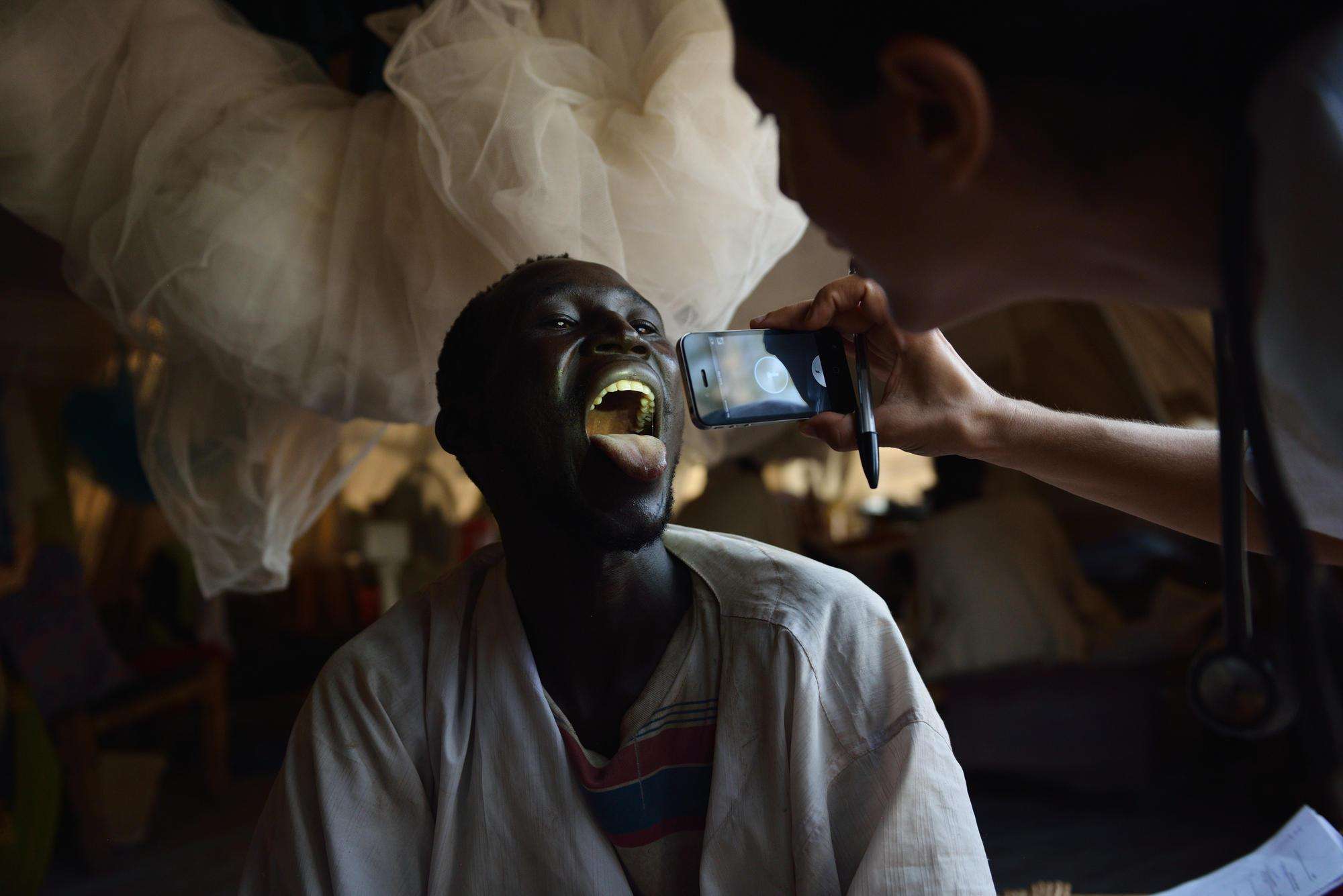Smartphones are changing modern life in countless ways, and they are revolutionizing how MSF delivers medical humanitarian aid to people in need. From creating maps to collecting diagnostics, here are four innovative ways that smartphones are making a difference for our teams and patients.
Putting patients on the map
To deliver food, shelter, medical care, and other lifesaving services in a humanitarian crisis, you need to know whereto find the people most in need. But the homes of millions of people around the world are not represented on any accessible map. For MSF teams, this means a lack of available information to draw on when planning aid efforts. That’s why the Missing Maps Project, a partnership between MSF and other humanitarian organizations formed to map the most vulnerable places in the developing world, created the MapSwipe mobile app. This free app for Android and iOS lets users search satellite imagery for features like houses and roads, identifying population centers so that groups like MSF can plan humanitarian responses.
“Now, with MapSwipe, we can give vaccination campaign coordinators a super-fast snapshot of where the population clusters are, helping them to send their teams to the locations where they are most needed to achieve maximum vaccination coverage,” said Pete Masters, MSF medical innovation advisor. Learn more at Mapswipe.org.
Diagnosing deadly diseases
MSF teams often work in places with limited resources. Without complex, expensive equipment like CT scanners, some diseases, like cerebral malaria and meningitis, can be difficult to distinguish from one other. One way to differentiate these diseases is to examine a patient’s retina, the thin layer of tissue at the back of the eye. But generally only ophthalmologists know how to use equipment like ophthalmoscopes, the device needed to see this part of the eye. That is, until the advent of the PEEK: a portable eye examination kit. A relatively cheap (about $250) piece of equipment that slips onto any smartphone camera, PEEK allows MSF doctors to see close-up images of a patient’s retina to look for tell-tale signs of cerebral malaria, like hemorrhages or abnormal blood vessels.
“We knew we needed better diagnostics at the bedside—a simple tool that would help us identify malarial retinopathy,” said Estrella Lasry, MSF tropical medicines advisor. “When one of our pediatricians heard about PEEK, we realized that this could be just what we were looking for.”
Modernizing health surveillance
Collecting detailed information about people’s health needs in emergency situations is a perennial problem for humanitarian organizations. To solve it, MSF teams have started using a new health surveillance program that collects data quickly and accurately and allows it to be shared in real time.
In northeastern Nigeria, MSF teams tracking rates of childhood malnutrition house-to-house previously had no choice but to rely on clipboards and paper spreadsheets, collating collected data by hand at the end of each day. Now, thanks to smartphones, teams can collect and collate data in real time, sharing it instantly with headquarters to plan medical responses. And in the Middle East, teams use similar technology to carry out broader health surveillance among refugees.
“This means we can make sure people receive the right type of assistance—whether it’s medical care, food, clean drinking water, or the materials to build a weatherproof shelter,” said MSF doctor Ghassan Aziz.
Microscopic photography
Imagine you’re an MSF doctor. You’re working in a basic hospital in a remote location and a patient arrives with a dangerously high fever. Over the next few days you try all the most likely treatment options, but nothing seems to work. Their lab tests show results that no one at the hospital has seen before. What do you do?
Until recently, biomedical scientists in MSF projects had to pick up a phone and describe the images seen through microscopes to get advice from colleagues overseas. To solve this problem, MSF is testing adapters that will enable medical staff in the field to use their smartphone cameras to capture high-quality photomicrographs—images of specimen slides as seen through a microscope. Using telemedicine, these photos can be shared with MSF staff and other experts around the world for quick and effective consultations to benefit our patients.





